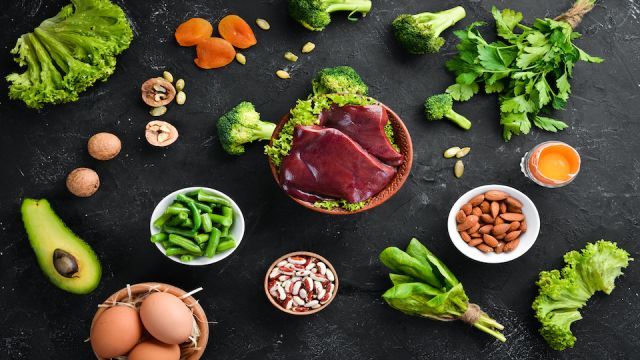
Anemia is a blood disorder that affects nearly 3 million Americans according to the National Heart, Lung, and Blood Institute. Though there are different types of anemia caused by genetics and various other health conditions, iron-deficiency anemia is by far the most common. So how can you tell if you are anemic and what can you do to help manage this deficiency? Read on to find out.
What is iron-deficiency anemia?
Your body needs iron to function. Hemoglobin is a protein attached to red blood cells that are responsible for carrying oxygen from the lungs throughout the body, and iron is an essential part of hemoglobin. Iron travels from the small intestine through the blood to bone marrow where it is then involved in the oh, so important formation of red blood cells. Simply put, you need iron to make hemoglobin, and you need hemoglobin to deliver oxygen to your muscles and tissues.
When your body doesn’t have enough iron, it becomes less efficient at producing red blood cells which in turn restricts oxygen to your muscles, heart, brain, and other tissues and causes them to be unable to perform effectively.
How do you become iron deficient?
Iron deficiency can be caused by a number of things, including pregnancy, blood loss from menstruation or wounds, reduced absorption, growth spurts, poor diet, and inflammatory bowel disease. Many people experience iron deficiency after changing to a restrive diet where they are not getting proper nutrients.
Signs you might be anemic
Fatigue
We’ve all experienced tiredness at some point, and some of us have a daily battle with exhaustion due to poor sleep quality, not sleeping long enough, or just having a generally exhausting lifestyle. If you are anemic, however, the tiredness will feel different. It is often described as draining fatigue that isn’t explained by your activities or stress levels. Such exhaustion is never normal, so it is important to talk to your doctor as this is often one of the first signs of anemia.
Since our lives and jobs are often incredibly demanding and take a lot out of us, it can be hard to diagnoses anemia on fatigue alone, but you may also notice other changes in behavior such as weakness, feeling cranky, difficulty concentrating or reduced productivity.
Paleness
Being unusually pale, especially around the waterline under your eyes, gums, inside of your lips, your face and the nailbeds and palms of your hands is the main visual indicator of moderate to severe iron-deficiency anemia. Because the hemoglobin in red blood cells gives blood its color, lack of this protein leads to lifeless pale-looking skin.
Cold extremities
When your hands and feet are constantly cold and clammy (especially in hot weather when they should be warm), you most likely have an iron-deficiency.
Shortness of breath
If you feel like you can’t catch your breath when climbing the stairs, performing a low cardio workout, or simply getting up and walking somewhere, you clearly are not getting enough oxygen into your body. Unless you have asthma, this is a good indicator of anemia.
Heart palpations
Your heartbeat should not be something you notice. You may have anemia if you find yourself experiencing skipping or noticeable heartbeats (known as heart palpitations) or if you feel like your heart is beating abnormally fast.
Dry and damaged hair and skin
When your body doesn’t receive enough oxygen, it overcompensates by protecting more essential bodily functions such as internal organs and tissue. This can often cause your skin and hair to suffer as a result. You may notice that your hair become more brittle and starts falling out and that your skin is dry.
What you can do
If you suspect you are anemic, the first step should be to consult your doctor and receive a proper diagnosis. Follow whatever treatment plant they suggest, which might include iron supplements for a time, but remember, one of the best ways to increase your iron intake is to eat a healthy diet of iron-rich food such as the following:
- Legumes
- Tofu
- Red meat
- Quinoa
- Spinach
- Shellfish
- Liver
- Leafy greens
- Nuts and seeds
- Organic soybeans
- Grilled chicken breast
- Blackstrap molasses
- Eggs
Even if you aren’t anemic, it doesn’t hurt to eat these healthy foods that not only boost your iron levels but have a host of other benefits as well. It is all about staying mindful of what you put into your body and being in tune with how you feel.
-The Alternative Daily

